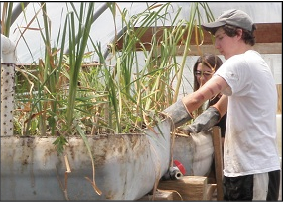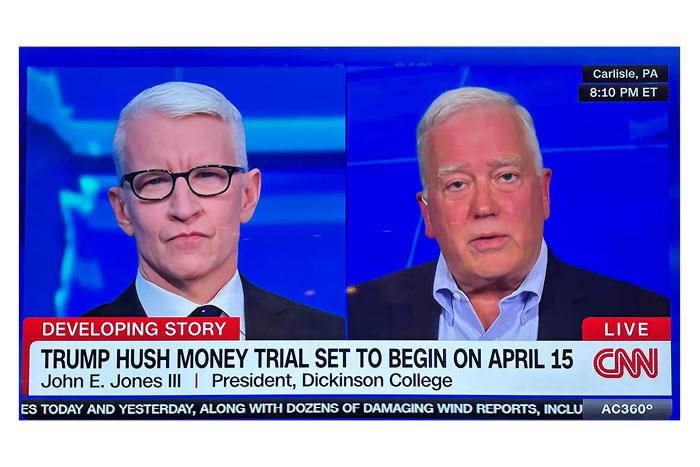
While most students were sunning themselves on the beaches this summer, Dickinson College was earning awards.
Chosen from a pool of more than 800 colleges and universities across the country, including many large research institutions, Dickinson was ranked second in the Sierra Club’s annual Top Ten Cool Schools list and included in the Princeton Review’s Green College Honor Roll.
These rankings do not mark the first recognition that Dickinson has received for its sustainability initiatives. Dickinson was ranked as the second Coolest School by the Sierra Club in 2010. However, due to the extensive data collection process that is necessary to be eligible for these rankings, the Center for Sustainability Education (CSE) did not submit application materials again until this year.
“We had gotten so many inquiries from alumni and others asking why we weren’t on the list. We felt like having been ranked number two we didn’t need to apply again, and now we figure we’ll submit the information each year because that’s easier than having to explain to everyone why we’re not on the list every year,” said Neil Leary, director of the Center for Sustainability Education (CSE).
According Leary, the CSE submits data to the Association for the Advancement of Sustainability in Higher Education (AASHE) using their Sustainability Tracking and Reporting System (STARS). The Princeton Review and the Sierra Club magazine then use this data to create their annual rankings, affording different weights to the more than 200 categories that the STARS report includes. These criteria span the full range of the academic curriculum, faculty and student research, co-curricular programs, dining hall operations, energy use information, and greenhouse gas emissions. CSE Projects Coordinator Tyce Herrman began preparing the report to submit to AASHE in January 2013 and finished in mid-April.
“The report included contributions from probably more than 15 different offices throughout the college,” said Lindsey Lyons, Assistant Director of the Center for Sustainability Education. “We get inputs from Department of Public Safety, facilities, financial operations, dining services- they’re collecting data for their own purposes, and Tyce puts out requests for whatever we need [for the report].”
As sustainability becomes further entrenched in the campus culture at Dickinson, the staff of the CSE has witnessed an increased interest in sustainability among faculty, staff, and students.
“As sustainability becomes more institutionalized here, more departments are willing to collect more and better data each year,” Lyons noted. “The numbers that are coming to us are more thorough and more organized, just in the last couple years that I’ve been here.”
“We’ve seen more students who are interested in sustainability [matriculate here in the past few years]. I was just floored by the students at orientation – how many of them were coming up to us saying that they came here for sustainability,” said Herrman.
This increasing interest in sustainability (environmental, social, or economic) reflects a national trend in changing expectations students have for their institutions of higher education. According to President Nancy Roseman, 65% of Dickinson students indicated in a survey that sustainability initiatives at Dickinson factored into their decision making process when choosing to attend the college. This statistic is in line with a national figure from the Princeton Review, which found in a survey that 68% of students indicated sustainability as a factor in their decision to attend a college. Ultimately, the staff at the CSE and members of the college administration agree that in addition to the inherent values of an education in sustainability, the publicity about Dickinson’s sustainability initiatives has a positive impact on the college itself.
“I think from the operations standpoint, we are sort of a microcosm of a community, so showing the best practices in operations that others can model is important. The reporting part is important because it puts all of our information out there and lets other people pull ideas from us. Its valuable not only for other schools but for communities all around the world,” said Herrman.
“[This kind of publicity gives us] a way to be distinctive in a really crowded market,” said Stephanie Balmer, Vice-President of Enrollment & Communications and Dean of Admissions.



